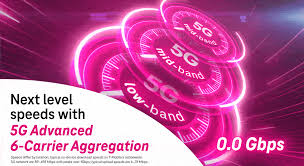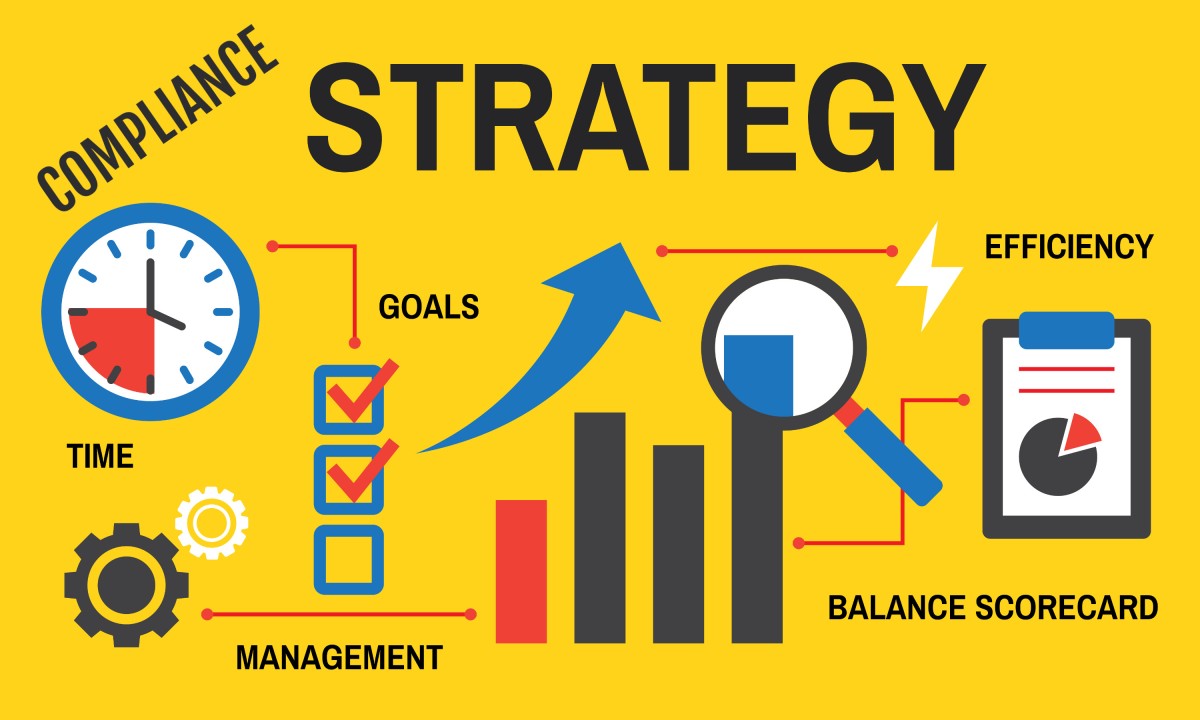Why 5G Is More Than Just Faster Internet on Your Phone
5G is shaping the future with its transformative power. It’s not just a leap in internet speed; it’s a technology that’s redefining industries and everyday life. Imagine experiencing augmented reality, seamless interconnected devices, and healthcare breakthroughs—all enabled by 5G. As industries adapt, this advancement is causing a ripple effect in various sectors. From the HONOR Magic7 Pro to smart cities and remote surgeries, 5G’s impact is vast and multifaceted. This blog will explore 5G’s core technologies, real-world applications, and a range of innovative use cases that extend far beyond mobile phones. We will also dive into the potential challenges 5G faces in its adoption. By the end, the true potential of 5G will be clear, showcasing why it is more than just faster internet.
What Makes 5G Different from 4G
Speed and Latency Improvements
5G is recognized for its awe-inspiring speed improvements, promising data rates that can reach up to 10 Gbps. This leap means downloading high-definition movies in seconds and experiencing lag-free video calls. However, speed isn’t the only advancement. Latency—the delay before data transfer begins following an instruction—is significantly enhanced. Traditional 4G networks operate at latencies of about 50 milliseconds, whereas 5G can reduce this to as low as one millisecond. This nearly instantaneous connectivity is crucial for applications requiring real-time responsiveness, like remote surgery and autonomous driving. Lower latency minimizes delays and buffering, ensuring smoother user experiences across all devices. The shift to 5G makes data transfer as close to real-time as possible, setting a new standard for interactions in digital ecosystems. Such capabilities will accelerate technological growth across sectors, presenting a future where speed and performance are harmoniously optimized.
Massive Device Connectivity and Capacity
The architecture of 5G is crafted to support an immense number of connected devices simultaneously. Unlike 4G, which can become congested with numerous devices sharing the same network, 5G can handle up to one million devices per square kilometer. This is achieved through technologies like Massive MIMO (Multiple Input Multiple Output) which increases the capacity and range of the network. This capacity is invaluable in environments with high device density, such as smart cities or large-scale industrial sites. Enhanced connectivity enables seamless communication between smart devices, from household appliances to complex industrial machinery. This opens doors for advanced smart home systems, more efficient IoT networks, and broader inter-device communication, revolutionizing how systems integrate and operate. With 5G, the possibility of everything being connected is not just a futuristic ambition but an impending reality, reshaping how cities, industries, and homes function.
Behind the Scenes: 5G’s Core Technologies
To understand 5G’s impact, exploring the core technologies powering it is crucial.
Edge Computing & Network Slicing
5G utilizes edge computing to bring data processing closer to the data source. This reduces latency and enhances efficiency, crucial for real-time applications. By processing data on local servers instead of distant cloud centers, devices operate faster. Network slicing further accelerates this process, splitting a single 5G network into multiple virtual networks. Each ‘slice’ is optimized for a specific use case, meeting diverse needs efficiently. For instance, one network slice could prioritize minimal latency for gaming, while another supports the massive bandwidth demands of a smart city. These technologies ensure that 5G networks remain flexible and efficient, adapting to users’ and industries’ varying demands. They offer opportunities for customization, supporting applications from enterprise to consumer-level with precision and reliability, marking a departure from the one-size-fits-all approach of previous generations.
Small Cells, Beamforming & MIM
Small cells are pivotal in 5G’s widespread deployment. These low-powered antennas can be strategically placed to provide better coverage and capacity where demand is high. They work in tandem with beamforming—a technology that directs radio signals to specific areas rather than broadcasting across a wide range. This focused approach reduces interference and improves signal quality. Additionally, Massive MIMO technology facilitates the handling of multiple data signals simultaneously, multiplying the capacity of the network without requiring additional spectrum. Together, these technologies ensure consistent, high-speed connections regardless of user location or network congestion. They are key in optimizing 5G’s performance, ensuring that it delivers on its promises of speed, capacity, and stewardship, revolutionizing mobile network operations and paving the way for extensive 5G application adoption in various field scenarios.
Innovative Use Cases Beyond Phones
5G is unlocking innovative applications that extend beyond traditional smartphone usage.
Flood Monitoring and Environmental Sensing
5G enables detailed flood monitoring and environmental sensing, playing a critical role in disaster management and environmental protection. Equipped with real-time data transmission capabilities, smart sensors can provide constant updates on water levels, enabling quick responses to unfolding natural events. This real-time monitoring can alert authorities to potential floods, enabling preventative measures and minimizing damage. Beyond flood monitoring, 5G offers enhanced capabilities for environmental sensing. Air quality sensors, equipped with 5G connectivity, can report pollution levels with high precision, helping manage urban air quality and informing public health policies. This enhanced situational awareness allows for proactive environmental stewardship, guiding sustainable practices and resource management. As these use cases expand, the potential for 5G to contribute to ecological preservation and crisis response becomes undeniable, enhancing our ability to monitor and interact with our environment dynamically.
Immersive AR/VR Experiences
The burgeoning field of Augmented Reality (AR) and Virtual Reality (VR) experiences is set to expand with 5G’s high-speed and low-latency capabilities. These experiences demand significant data processing and seamless connectivity, which 5G networks can deliver. It allows for high-definition graphics and interactive content to be streamed in real time, enhancing user engagement and immersion. From education to gaming, AR/VR applications are becoming increasingly sophisticated, offering enriched learning experiences and entertainment. Retail environments can also benefit, offering virtual ‘try-before-you-buy’ experiences, transforming how customers interact with products. In industry, simulations for training or maintenance can be conducted in real-time, safely and efficiently. As 5G technology supports these interactive experiences, it opens new avenues for creativity and innovation, allowing AR and VR to reach their full potential and transform how we engage with digital content.
5G and the Honor Magic7 Pro in Context
The HONOR Magic 7 Pro exemplifies how devices leverage 5G to deliver superior performance. Featuring cutting-edge design and technology accessible through HONOR’s shop and the latest HONOR Magic 7 Pro deals, this smartphone harnesses 5G to provide unparalleled internet speeds, crystal-clear video calls, and immersive gaming experiences. Its capabilities extend beyond basic connectivity, offering seamless integration with emerging technologies like AR and VR. Users gain access to more sophisticated apps that respond instantly, powered by 5G’s rapid data transfer. Moreover, HONOR optimizes the Magic 7 Pro for multitasking, ensuring apps run smoothly even when demanding data throughputs. It is this harmony between hardware design and network capability that showcases the transformative potential of 5G. As the HONOR Magic 7 Pro and similar devices evolve, they highlight how 5G advancements refine user experiences, connectivity, and overall device functionality, paving the way for future technological breakthroughs.
Conclusion
5G is more than just an upgrade in mobile connectivity; it’s a transformative force reshaping industries and daily life. From healthcare to autonomous vehicles, smart cities to environmental monitoring, its applications are widespread and impactful. Technologies such as the HONOR Magic7 Pro demonstrate the immediate benefits to users, enhancing how devices perform and interact with their environment. However, realizing 5G’s full potential requires overcoming challenges, from infrastructure to security concerns. As 5G continues to evolve and integrate into our technological ecosystem, it promises to unlock unparalleled innovation, connectivity, and efficiency. Understanding and embracing this technology equips us to harness its benefits fully, paving the way for a future where connectivity drives progress and enriches lives across the globe.




